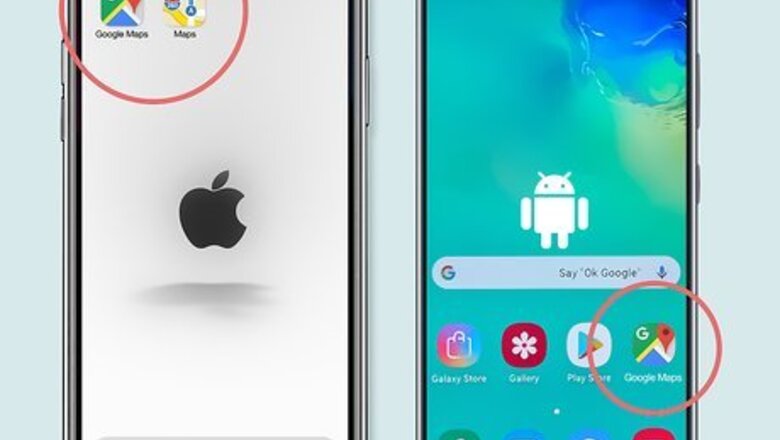
views
Using GPS to Track a Car
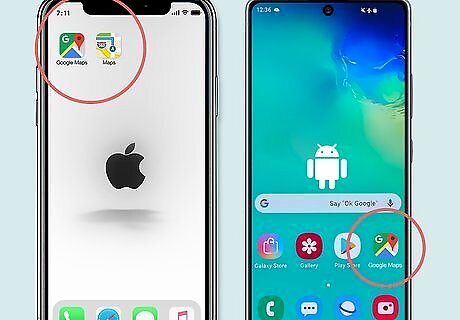
Download an app that tracks your car’s location. Both Apple and Google Maps have built-in location-tracking features. Apple Maps is available on iPhones, while Google Maps is available on both iPhones and Androids. In addition to your phone’s map app, there are many other apps you can download to help keep track of your car. Some free ones include Find My Car Smarter, Anchor Point, Honk, and Parkify. Parking apps all work in a similar way, although the specifics will vary slightly depending on which one you’re using. All of them enable you to pin your location on a map manually, even without Bluetooth. To use automatic tracking features many parking apps have, pair your phone to your car's Bluetooth system first. Since Apple and Google Maps come pre-installed on most phones, you may be able to take advantage of them even if you didn’t use them before.

Pair the phone to your car’s Bluetooth system before you park. Open up your phone’s settings, then turn on the Bluetooth option there. Wait for your phone to detect your car. Then, tap it to connect the two systems. When you move away from your car, your phone will save its location so you can navigate back to it later. If your car doesn’t have built-in Bluetooth technology, open one of the car finding apps, then tap your location on the map to register it. If your car doesn’t come with Bluetooth, you could fit it with a Bluetooth-enabled stereo, adapter, or calling kit. However, it has to be installed and paired with your phone before you leave your car.

Turn on location services while you’re in your car. Double-check that your phone’s GPS service is active so that you can use it to retrace your footsteps later. Open your phone’s settings and look for an option labeled location services or location history. On an iPhone, tap the “privacy” option, then enable “location services” and “significant locations.” On an Android, tap “location,” then turn on “Google location history.” Another option is to pull down your phone’s status bar, which you can do by dragging your finger down from the top of the screen. If the location service icon is lit up, your phone is tracking your location.
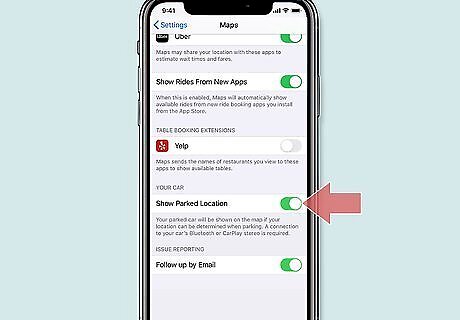
Activate parked location tracking on your phone. If you have an iPhone, open its settings, then press “maps”. Make sure the “show parked locations” option is turned on. Android phones don’t have this option, so open up the app you plan on using instead. Tap your location on the map to save it. For example, if you’re using Google Maps, you will see a blue dot marking your location. Tap it to find a “save your parking” option. Alternatively, ask your phone’s digital assistant service to remember where your car is. On an iPhone, say something like, “Hey Siri, remember where I parked.” On an Android, say, “Hey Google, I parked here.” You can open up Apple Maps or other parking apps to save or edit your parking location. Some apps allow you to write notes or upload photos to help you find your car.
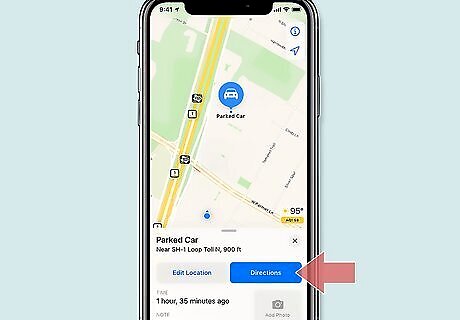
Open the parking app again when you need to find your car. Your car’s location will usually be marked by a blue icon on the map. Tap on the search bar inside the app, then select the “parking” option. Finally, press “directions” to have the app show you how to get to your car. Many apps allow you to get specific directions for walking, riding, or taking public transportation to your vehicle. If your phone has a digital assistant, you could also use it to immediately get directions to your car. For example, say “Hey Siri, where did I park my car?” on an iPhone or “Ok Google, find my car” on Android. Your phone’s digital assistant will make use of Apple or Google Maps. If you prefer using a different app, you will have to open it on your own and use it manually.
Locating Your Car in a Parking Lot
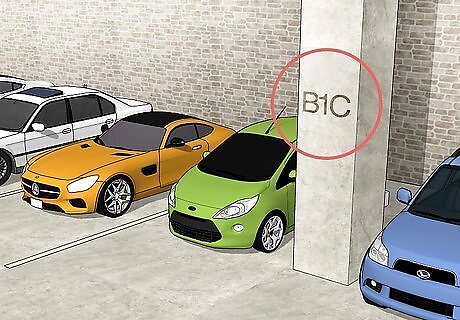
Recall any distinguishing marks close to where you parked. When you first get out of your car, look to see if your parking space is labeled. Then, check for any other landmarks or interesting sights you can use to pinpoint your location. Big, vibrant, or unusual landmarks make your parking spot much more memorable. When you return, use the landmarks to direct you back to your car. Many big parking lots and garages have labeled spaces or overhead signs you can use. For other spots, pillars, lights, signs, trees, and buildings are a few landmarks that may help you get back to your car. Try to pick something memorable that can be seen from a distance. For example, tell yourself, “I’m in the St. West parking lot near the orange billboard in front of the gnarled tree.” If you have a hard time remembering where you park, write down your location or take a picture of it.
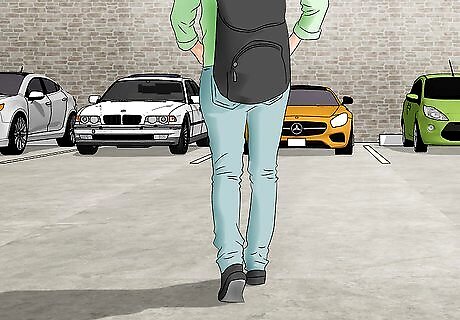
Retrace your steps back to your car. Remember which way you went when you exited the car. Recalling your steps can be difficult, but start from a point as far back as you are able to remember. Even if you’re moving in the same general direction, it improves your chances of coming upon your vehicle. Retracing your steps can also jog your memory or help you find recognizable landmarks. Avoid approaching the parking lot from a different direction. It could confuse you. Instead, follow the path you took as closely as possible.

Ask parking attendants for help if any are available. Many large parking lots, such as at airport garages or concert venues, have staff on hand that can help you find your car. If you’re lost, look for a help number posted nearby. Call it on your cell phone or on a nearby emergency phone, if one is available. Available attendants can usually track down your car using your license plate number or a brief description of your car. If you’re in an area without a call number or an accessible phone, walk toward nearby buildings. Look for any lot attendants or security guards nearby.
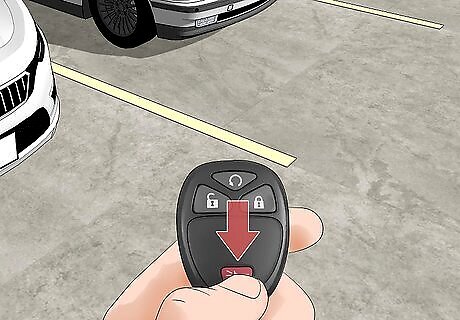
Press the panic button if you have a remote key fob. The red emergency button on a key fob sets off the car’s alarm. It is very useful if you’re lost, but you have to be in range of your vehicle. You also have to have a working battery in the key fob. When you’re able to use it, the panic feature lights up your car in addition to making a lot of noise. Be prepared to shut off the alarm right away, especially if you’re in a quiet area at night. Shut off the alarm by pressing the panic button again or by starting the car. Keep your key fob in working order so you can use the panic button when you need it. When the fob stops working, replace the battery on your own or by taking it to a mechanic.
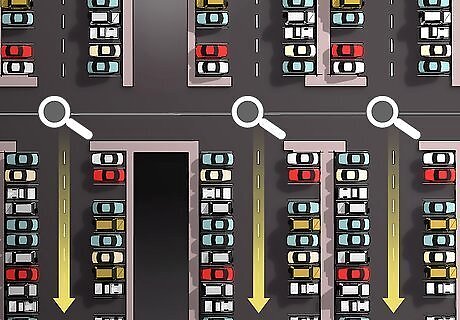
Search gradually through the parking lot if you are still unable to find your car. If you’re really struggling to remember where you parked, search row by row. Start at one end of the parking lot, checking out the cars on both sides. Then, continue on down subsequent rows until you come upon your car. As long as you search systematically, you are guaranteed to find it. Searching this way isn’t fast, but don’t rush. Checking aisles randomly means you could still end up missing your car. If you still aren’t able to find your car, it could be stolen. Consult security if you haven’t already, then call the police.
Locating a Missing Car
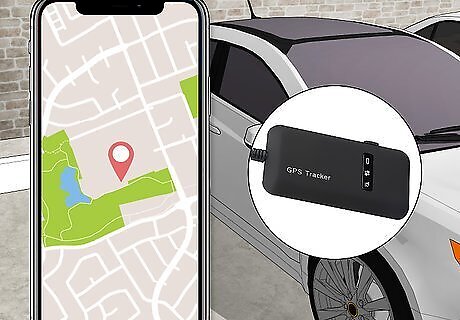
Check your car’s location if it has GPS. Some cars come with built-in GPS, while others include systems like OnStar that can be used for tracking purposes. Call your service provider and ask them to track your car’s location. If your car doesn’t come with one, you can buy a separate GPS tracker and have it installed. Some GPS services are also accessible through a phone or computer. GPS devices have to be set up before they are usable. They can be plugged into a few different spots, such as through a cigarette lighter or power wires under the dashboard. Call a mechanic if you need help setting it up. Register your GPS device on the manufacturer’s website after the installation. If you don’t set up an account there, you won’t be able to use it to track your car.

Gather any identifying information you have for the car. Find any legal documents, such as the car’s registration, if you have it with you. Then, write down anything else you can think of that distinguishes the car. Include the car’s make, model, and color. Some other things that may help include the license plate number and vehicle identification number (VIN). If you can’t recall your license plate number, call your insurance provider or your local vehicle registration department. The VIN is located on a tag usually placed inside the driver-side door. It will also be on the car’s title. Make copies of all your important documents instead of storing the originals in your car. Record the identifying information in your phone as well so you always have it available.

Call local towing companies to see if they have your car. Many times, cars go missing because of improper parking or another violation. Check the parking lot to see if there are any tow warning signs posted. These signs typically have a phone number you can call to ask about your car. If you don’t see a sign, contact the police, your local government office, or look up nearby tow lots. Give the tow company any identifying information you have. Double-check that they took the car from the lot you’re in to confirm that it’s your car. Many cities have databases you can use to see if your car has been towed. Go onto the city’s official government website to see if they have a referral link to a website you can use to search for your car.

Contact the police if you are still unable to find your car. If you have exhausted all other options, your car may have been stolen. Although it seems bad, try to stay calm. The police are better able to track the car than you are. Tell them that you want to file a missing car report, then give them any information you have. File a report with the police as soon as possible. The longer you wait, the less likely you are to find your car. After speaking with the police, ask for a copy of the report. Check it over for inaccuracies, then keep it with you during your search.

Watch available security footage to see what happened to your car. Many parking lots have security cameras positioned around the walls or fences. Contact any available parking attendants or the lot owner and ask them, “Can I take a look at the security footage?” Do this as soon as you can to ensure that the footage isn’t lost or taped over. You can ask any private businesses nearby for available footage. Some places have security cameras that may have caught a glimpse of your vehicle. Bring a copy of the police report with you. It may encourage some businesses to comply with your request.
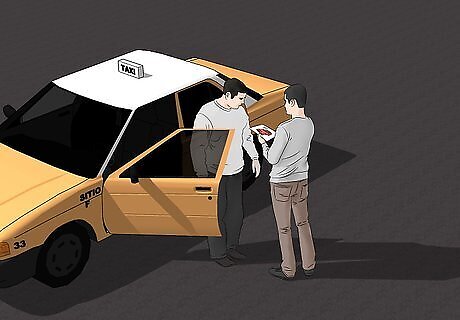
Ask cab companies to keep an eye out for your car. Cab drivers are on the road a lot. Call up any local cab companies operating in your area, then ask them, “Please look out for my missing vehicle.” Sweeten the deal by offering a reward for anyone who helps find it. Give the cab company a detailed description of your car, then mention that “There is a reward for anyone who helps me find the car.” Be specific so that they are better able to help you. The reward you offer depends on what you’re willing to pay. Some people think $50 to $100 USD is fair. You might wish to offer more if your car is valuable or someone works hard to help.


















Comments
0 comment